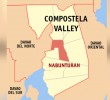LITO: Bai, nia na gyud ang dugay na kaayong gipaabot sa katawhan! [Bai, what the people has dreamt for so long is here at last!]
AKO: A, kanang Kasabotan tali sa Gobyerno ug MILF? [Ah, the RP_MILF Framework of Agreement, you mean?]
LITO: Oo! Makab-ot na gyud ang malungtarong Kalinaw sa Mindanaw! [Yes! A lasting Peace in Mindanaw shall at last b e a reality!]
AKO: Taympa. . .Kalinaw na ba diay na? Ayaw pagdali-dalig kongklusyon, Bai! Dili pa na Peace Agreement. [Wait. . .Is that what you call Peace? Don’t be too quick to assume that is already a Peace Agreement.]
LITO: Unsa man diay imong tan-aw anang gitawag og “Kumprensib Agrimen on da Bangsamoro to”, Bai? Supak ka ana? [Why, what do you think of the so called “Comprehensive Agreement on the Bangsamoro”, Bai? Are you opposed to that?]
AKO: Supak? Dili. Dili ko supak ana. Ang ako lang…dili dayon nato ihurot atong paglaom anang maong kasabotan. [Opposed? No! My concern is we should not absolutely pin our hopes on that agreement.]
LITO: Ngano man kono nga giproseso man nag maayo una makab-ot nila nang kasabotan? Ug wa may laing tumong ug katuyoan ana kundili ang malungtarong kalinaw sa Mindanaw? [But why not, when that agreement has passed through a due and meticulous process? And it has no other aim and purpose but a sustainable peace for Mindanao?]
AKO: Tingali maayong balik-lantawon nato ang kasaysayan sa mga kasabotan kalabot sa mga Moro ug sa mga kagamhanan sa Pilipinas sukad pa kaniadto, aron makabaton tag tukmang panglantaw mahitungod niini. Kay Ubay-ubay nang nahitabong mga kasabotan tali sa nakigbisog nga katawhang Moro ug gobyerno. [Maybe, it’s good to look back to the history of the agreements involving the Moro and the different governments of the Philippines from way way back, so that we can have a proper perspective on this issue.]
As far as I can recall, even during the American colonial period an agreement had been forged between the Moro people under the Sultan of Sulu and the US government. This was called the Bates Treaty. But it was shortlived having been abrogated by the US government, because in the first place it was not meant to last but just as an expedient move to “divide and rule” the Filipinos. At that time the US was at war with the Filipino revolutionaries. They wanted to concentrate their armed forces in Luzon. And so the Bates Treaty was a tactical trick to hold the Moro armed resistance at bay, while they were busy trying to crush the Filipino revolutionary forces in the north.
Since then, all through the years up to the present, it has been an alternation of “war and peace” between the Moro resistance fighters and the Philippine government—a veritable “off and on” case of peace and cessation of hostilities, followed by exchange of accusations and fighting. The silence of guns could not last very long, it would soon be followed by gunbursts which call for another round of talks and so forth and so on.
And NOW, some 115 years from the infamous Bates Treaty of 1899, all hopes for lasting peace become a gigantic bonfire around which shouts of jubilation resound —both Moro and Christian population in Mindanao and elsewhere—shout their welcome for the signing of what has been tagged as “Comprehensive Agreement on the Bangsamoro”. The principal players in this historic event are President Benigso S Aquino III and MILF Chairman Al Haj Murad, along with their respective deputies.
But the nagging question is: Will this Peace Agreement prosper towards the attainment of a lasting or sustainable peace in Mindanao? Will it not go the way of the previous peace agreements that end up in another wave of skirmishes on the battlefields?
It seems there is undue hurry in pursuing this event. Certain doubts are bound to be raised, because some quarters in the Moro population have been excluded. Nur Misuari and his MNLF fighters were deliberately ignored. Heaven knows how disgruntled they must be. In the history of the Mindanao Moro people’s struggles “divide and rule” tactics invariably employed by the different ruling administrations never succeeded in subduing the Moro people.
The question of insincerity always falls heavily on the side of government. As far as the Mindanao conflict is concerned, the Moro people has been historically fighting a war of resistance against invading forces. If there were deceitful political acts or tactics, these certainly were the handiworks of the forces who wanted to crush a defensive act of resistance by a sovereign people. It could not be otherwise. In fact, this was exactly what happened with the Bates Treaty. The Moro people were made to believe the American colonial administration in Mindanao and Sulu was only a “protectorate” as craftily worded in the local language version of the Treaty. But the English version proclaimed “total sovereignty” of the Americans over the entire Moroland.
Likewise, subsequent governments have not been transparent with their real political ends in carrying out peace initiatives in the Moroland. As borne out by history, they only continue the militarist policy of the American colonialists vis-à-vis the Bangsamoro people. The US imperialist legacy of massacres has been handed down in history in the form of “all-out war” waged in varying degrees by all administrations of the Philippine government. Waged with merciless ferocity in Bud Daho and Bud Bagsak , so it was in the Jabidah massacre and in Camp Abubakar , and the mass slaughters during the regimes of all the other Commanders-in- Chief of the Philippine armed forces.
So what is really new in the current Peace Agreement—remarkable in that it is fast-tracked by President Pinoy’s government? If truly processed with sincerity and good intentions, why the exclusion of the MNLF? Can “words of warning” from the President to anyone who wants to scuttle the peace process deter any other Moro rebel force from making any destabilizing move in the near or far future? This statement is frightfully ominous. It smacks of audacity and hardheadedness that can only be taken as a sign of a fascist bent in the President’s nature.
The President should remember the words of the late makabayan Senator Jose W Diokno to the effect that “the Military must not be given mileage in the exercise of State power” for obvious reasons. For why should he be so trusting to an institution that has tasted ‘undue coddling’ by the late dictator Marcos by virtue of which it has developed the intolerable habit and acts of killing with impunity and committing human rights abuses against the people?
Does President Pinoy now forget from whose quarter were the killers of his own father? His evident dalliance with the same institution that served as the very instrument of repression and injustice during the martial law regime is a dangerous tendency. It can subconsciously develop in him a kind of habitual bonding with military might to advance self-righteous ends or policies of his government—a self-righteousness which may push him to the inevitability of dependence on the armed might of the State. If such as this happens, can martial rule be far behind?
Martial law can take many covert forms. In fact, it has already been in existence in the countryside—in areas where the Military has based itself for counter-insurgency reasons, under a very deceptive codename, i.e. Oplan Bayanihan. And President Pinoy either has no knowledge of the human rights abuses of his military. Or he is simply tolerating it as a military secret policy.
And if for any reason his fast-tracking of the peace process will turn awry, will he wield his power and unleash the might of the military as a manifest act of privileged willfulness?










